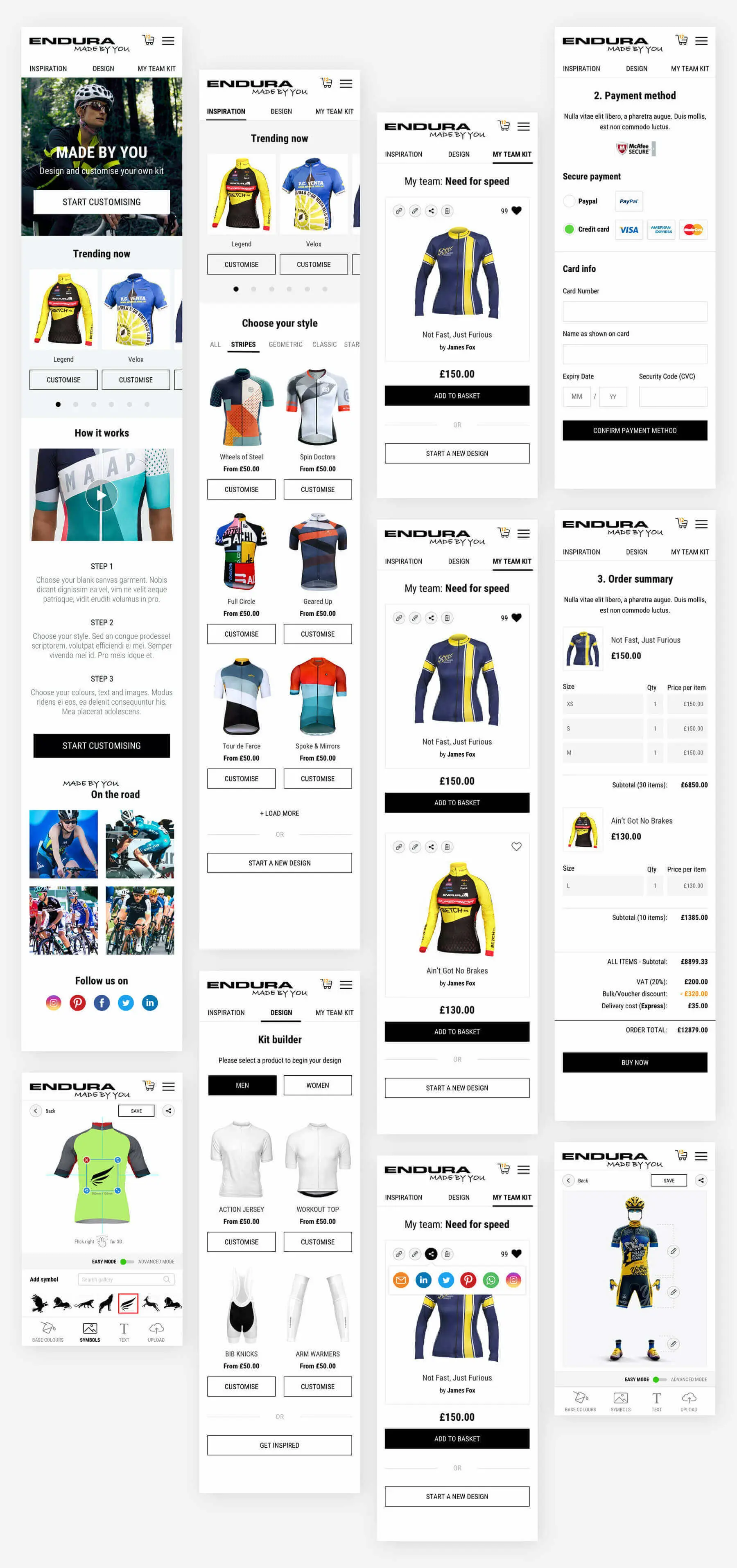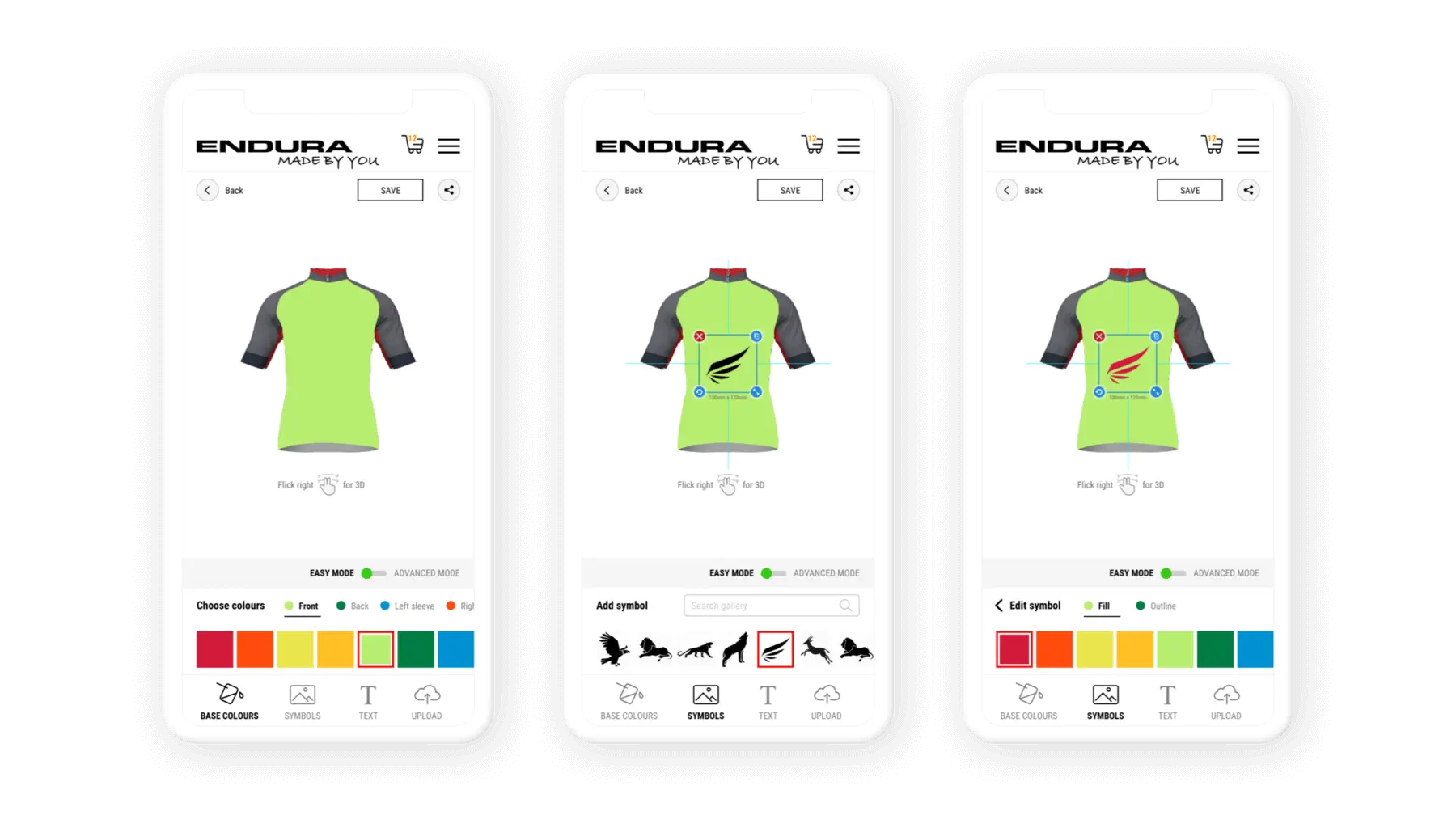

Pentland is a global fashion retailer looking after many household names like Speedo, Berghaus, Endura, Mitre and Ellesse amongst others.
We were asked to create new direct-to-consumer (D2C) propositions for their sportswear brands, with a focus on the different ways they could service customers looking to kit out their sports teams.
"Distinction is a brilliant agency, always putting users' needs and engagement at the forefront of everything they deliver whilst linking back to the project goals and objectives."
Using Design Thinking principles, we worked closely with the Pentland team to ideate and implement the 'Made By You' proposition.
We led the sessions and defined the programme's direction for the current and future phases, including the creation of a full prototype that could be tested with customers.

Employing Design Thinking allowed us to look at how best to implement the Made By You proposition, which was part of a larger programme of innovation.
Our approach influenced and helped define the programme's direction for the current and future phases.





